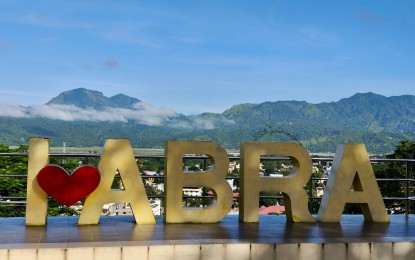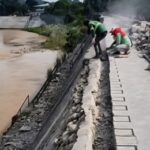MANILA – Abra Representative JB Bernos is pushing for the declaration of the province as a Tourism and Cultural Heritage Area to help pursue its sustainable, inclusive, and culturally-rooted tourism development.
A news release said that through House of Representatives Bill 3120, or the Abra Tourism and Cultural Heritage Development bill, Bernos seeks Abra’s declaration as a priority tourism development area and to institutionalize a comprehensive framework for the sector’s development.
The bill provides the policy and programmatic foundation for Abra to harness tourism as a driver of inclusive progress and rural transformation.
House Bill 3120 proposes the institutionalization and promotion of flagship events like the Kawayan Festival, which showcases Abra’s identity as a leading bamboo-producing province, and highlights the role of local culture in tourism and economic development.
Likewise mandated by the measure is the creation of a 10-year Abra Tourism Development Framework to identify tourism development zones; establish guidelines for ecotourism, heritage conservation, and cultural protection; and assess and evaluate the potential impact of the development on the environmental safety and well-being of the tourism and cultural heritage zones, communities, and enterprises, among others.
It also calls for the conduct of a comprehensive cultural mapping project, identifying sites, practices, and artifacts of historical and cultural value.
Abra boasts of attractions, such as the Kaparkan Falls, the 19th-century Baroque Saint Catherine of Alexandria Parish Church, and Tangadan Tunnel.
It is also home to centuries-old Tingguian cultural traditions, as well as weaving and bamboo crafts, which are highlighted during the Kawayan Festival.
“Abra is blessed not only with various natural wonders, but also with a rich culture and heritage that can still be witnessed in its communities to this day,” Bernos said in a statement.
“We believe that it is appropriate for our province to have a special designation, for us to further protect our natural resources and our culture.”
Kaparkan Falls
Kaparkan Falls is a stunning multi-tiered waterfall located in the municipality of Tineg, Abra province in the Philippines. It is renowned for its unique terraced limestone formations that create natural turquoise pools. The falls have long been a natural landmark for the local indigenous communities but have only recently gained wider popularity as an emerging tourist destination.
Saint Catherine of Alexandria Parish Church
The Saint Catherine of Alexandria Parish Church is a historic Roman Catholic church located in Żurrieq, Malta, believed to have been established in the late 16th century. It is renowned for its magnificent Baroque architecture, including a celebrated altarpiece by Mattia Preti. The church serves as a significant cultural and religious landmark in its community.
Tangadan Tunnel
The Tangadan Tunnel is a historic mountain passage constructed during the American colonial era in the 1920s, located in La Union, Philippines. It was a vital engineering project that improved transportation and trade by connecting the coastal towns to the inland regions. Today, it is a popular tourist attraction known for its scenic views and historical significance.
Kawayan Festival
The Kawayan Festival is an annual cultural celebration held in the town of Balamban, Cebu, Philippines, dedicated to honoring St. Francis of Assisi, the town’s patron saint. It highlights the town’s rich history of bamboo craftsmanship, which has been a vital local industry for generations. The festival features vibrant street dancing, colorful bamboo-themed floats, and displays that showcase the versatility and economic importance of bamboo (kawayan).
Tingguian cultural traditions
The Tingguian are an indigenous group from the mountainous Abra province in the northern Philippines, known for their rich oral traditions, intricate weaving, and animist beliefs. Their history is preserved through epic poems like the “Biag ni Lam-ang” and traditional practices that have been passed down through generations, reflecting a deep connection to their ancestral land.
weaving
Weaving is an ancient global craft that dates back thousands of years, with evidence of early textiles found in Neolithic cultures. It involves the interlacing of threads on a loom to create fabric and has been a cornerstone of cultural identity, economy, and artisanal tradition for civilizations worldwide.
bamboo crafts
Bamboo crafts represent a significant cultural tradition found across many Asian societies, with a history spanning thousands of years. This practice involves the skilled art of transforming bamboo into a wide array of functional and artistic items, from household tools to intricate sculptures. It remains a vital part of cultural heritage and sustainable artistry in regions where bamboo is plentiful.






